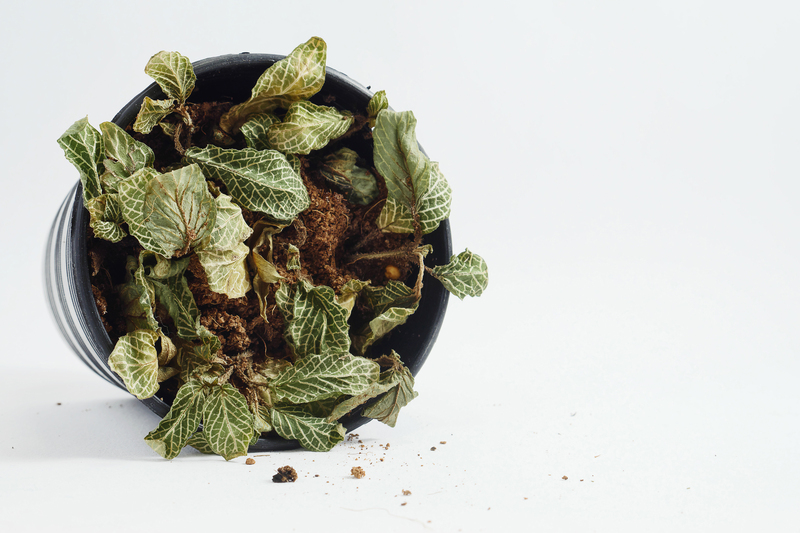Turn Your Lawn Into an Oasis: Essential Care Tricks for Newcomers
Your lawn is more than just a patch of grass: it's the centerpiece of your home's outdoor beauty. For many newcomers to lawn care, transforming that ordinary yard into a lush, green oasis may seem overwhelming. With the right guidance and a handful of easy-to-follow tips, anyone can create a yard worth admiring. This comprehensive guide offers essential care tricks for beginners to transform your lawn into a vibrant sanctuary.
Understanding Your Lawn: The First Steps
The Importance of a Healthy Lawn
A beautiful, thriving lawn does more than boost your home's curb appeal. It provides a cooling effect, prevents soil erosion, filters pollutants, and creates a safer, more enjoyable space for your family. Before diving into maintenance, it's vital to understand the basics of lawn care for newcomers.
- Improves air quality
- Enhances property value
- Reduces noise pollution
- Offers eco-friendly benefits
Evaluate Your Lawn's Current State
Start your lawn journey by analyzing its current health. Walk your yard and pay attention to:
- Grass color and uniformity
- Bare or patchy areas
- Signs of weeds, pests, or disease
- Soil compaction and drainage
Identifying these factors helps you create a tailor-made plan for your lawn oasis.

Essential Lawn Care Tricks For Beginners
1. Choose the Right Grass for Your Region
The best way to begin transforming your lawn is to know the type of grass that thrives in your climate:
- Cool-season grasses: Rye, bluegrass, and fescue thrive in northern zones.
- Warm-season grasses: Bermuda, zoysia, and St. Augustine are ideal for southern lawns.
Researching and choosing grass suited to your local conditions ensures less maintenance and a healthier, more resilient lawn.
2. Testing and Improving Your Soil
Healthy soil is the foundation of a thriving yard. Conduct a soil test using an at-home kit or by sending a sample to your local agricultural extension office. These tests reveal soil pH, nutrient content, and texture. Based on results, you may need to:
- Add lime to raise pH for acidic soil
- Apply sulfur to lower pH for alkaline soil
- Enrich with compost or organic matter for fertility
Balanced soil helps grassroots absorb more nutrients and moisture, setting the stage for a green lawn oasis.
3. Mastering Mowing Techniques
Mowing is about more than just cutting grass. Done right, it promotes healthier and denser turf. Follow these principles for optimal lawn maintenance:
- Mow high: Keep grass 2.5-4 inches tall, depending on variety, to encourage deeper roots and shade out weeds.
- Follow the one-third rule: Never remove more than one-third of the grass blade in a single mow.
- Sharpen mower blades for clean cuts that prevent disease.
- Alternate mowing patterns to avoid soil compaction.
Consistent mowing is a simple, but powerful trick to turn your lawn into an oasis.
4. The Right Way to Water
Efficient watering practices are crucial for lush lawns:
- Water deeply and infrequently to encourage deep root growth. Aim for 1-1.5 inches weekly, including rainfall.
- Water early morning to minimize evaporation and reduce fungal risk.
- Adjust for season and rainfall. Overwatering leads to shallow roots and disease.
Using proper watering techniques, your lawn will endure summer's heat and stay vibrant year-round.
5. Fertilizing for Maximum Growth
Fertilizing delivers essential nutrients to your turf. For newcomer-friendly lawn care:
- Apply a slow-release granular fertilizer in early spring and again in fall for cool-season grasses.
- Use starter or summer blends for warm-season varieties.
- Follow recommended application rates to prevent nutrient burn.
Organic fertilizers and compost are gentle options that improve soil structure and promote microbial activity.
6. Combatting Weeds, Pests, and Disease
Persistent weeds, pests, and disease can quickly derail your oasis dreams. Prevent these issues through:
- Maintain thick turf to crowd out weeds naturally.
- Spot-treat weeds with targeted, eco-friendly herbicides or natural solutions like boiling water or vinegar.
- Monitor your lawn for signs of pests like grubs or chinch bugs and choose biological controls when possible.
- Practice good sanitation--remove debris and keep mower blades clean to minimize disease spread.
Taking Your New Lawn Care Skills to the Next Level
Aerate for Healthier Roots
Aeration is the process of removing small plugs of soil to ease compaction and improve oxygen, water, and nutrient penetration. It's especially vital for high-traffic or clay-heavy yards.
- When to aerate: Perform in spring or fall for cool-season grasses, and late spring for warm-season varieties.
- How to aerate: Use a manual or machine core aerator--a spiked shoe isn't as effective.
Overseeding for Thick, Lush Growth
If you notice thinning areas, overseeding is the answer. This involves spreading new grass seed directly into existing turf to revitalize your lawn without starting from scratch.
- Mow and rake: Lower your mower and remove excess clippings and debris.
- Sow high-quality seed: Use a spreader for even coverage. Select varieties compatible with your existing grass.
- Keep moist: Water lightly and frequently until seedlings are established.
Overseeding not only thickens your turf but also helps reduce weeds and disease risk.
Dethatching: Revive Your Lawn's Breathability
Thatch is a layer of old roots and organic debris. While a thin layer protects the soil, excess thatch blocks water, air, and nutrients.
- Check thatch: If more than 0.5 inch thick, dethatch with a specialized rake or powered dethatcher.
- Repair bare spots: After dethatching, overseed and fertilize for recovery.
Mulching and Edging for Polished Appeal
Nothing completes a lawn oasis like crisp edges and mulched beds.
- Edge garden beds: Use a spade or mechanical edger along driveways and walks for a professional look.
- Mulch in garden beds: Organic mulch conserves moisture, smothers weeds, and enriches soil.
Lawn Maintenance Calendar: Year-Round Lawn Care Tips
Planning ahead delivers consistently stunning results. Here's how to maintain your new lawn oasis through the seasons:
Spring
- Rake debris and thatch
- Test and amend soil
- Apply pre-emergent weed control
- Aerate and overseed if needed
- First fertilization (cool-season grasses)
Summer
- Mow high to retain moisture
- Water deeply (1-1.5 inches/week)
- Monitor for pests and disease
- Spot-treat weeds
Fall
- Second fertilization (cool-season grasses)
- Aerate and overseed again if necessary
- Continue mowing until grass stops growing
- Rake leaves to prevent smothering
Winter
- Limit foot traffic on dormant lawns
- Service lawn equipment
- Plan improvements for next season
Common Mistakes New Lawn Enthusiasts Should Avoid
Even the most enthusiastic newcomers make errors. Steer clear of these frequent lawn care mistakes:
- Overwatering: Causes shallow roots and disease.
- Cutting grass too short ("scalping"): Weakens plants and promotes weeds.
- Ignoring soil health: Leads to persistent problems.
- Improper fertilizer use: Risks burning or stunted turf.
Remember: Patience and consistency are the true keys to transforming any yard into an oasis.
Pro Tips: Elevate Your Lawn Oasis
- Invest in a rain gauge to track watering needs.
- Install smart sprinkler systems for consistent irrigation.
- Choose low-maintenance grass types if you have limited time.
- Add decorative stones, stepping paths, and shaded seating for extra charm.

Frequently Asked Questions
How often should a new lawn be watered?
For newly seeded or sodded lawns, keep the top inch of soil moist with daily light watering until grass is established. Afterwards, switch to deep, less frequent watering.
Is mowing necessary in winter?
Most cool-season grasses go dormant in winter. Avoid mowing when grass isn't actively growing to prevent stress and root damage.
Can I fix a patchy, unhealthy lawn?
Absolutely! With aeration, overseeding, proper watering, and regular fertilization, even the most neglected lawns can be revived.
Conclusion: Enjoy Your Lush Backyard Retreat
Transforming your lawn into an oasis doesn't require endless hours or professional help. With consistent lawn care, essential tricks, and a dash of patience, any newcomer can achieve a healthy, stunning yard. Start by understanding your grass, caring for your soil, and managing watering and mowing. Address weeds and pests with smart, sustainable tactics. Remember, a truly lush lawn is grown one season at a time.
Looking for more tips? Explore resources from your local extension office, join neighborhood garden groups, or subscribe to expert lawn care blogs for ongoing inspiration. Your backyard paradise is just a few simple steps away!